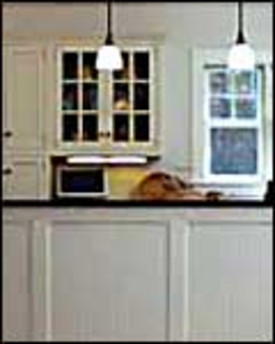Hardwood floors work anywhere in the home. In areas where they may see water and spills, regular maintenance will keep them looking like new for years.
Hardwood floors can be installed above or below grade, on concrete slabs, over plywood subfloors, or over existing wood floors. With concrete, moisture control is essential, but can be managed with a film barrier applied directly over the concrete. Engineered wood subfloors must be screwed or nailed in place prior to installation. Some manufacturers recommend proprietary underlayments that are specially suited to installation of their hardwood floors. Once the subfloor is in place, sanded, smoothed, or filled to provide a level, even surface, installation of the boards can begin. Whether you install the floor using a hammer , a specialized board nailer
, a specialized board nailer or stapler
or stapler , face nail the planks, or glue them to one another, the process of laying out the floor and marking for a square installation is the same.
, face nail the planks, or glue them to one another, the process of laying out the floor and marking for a square installation is the same.
Here are some tips and tricks for installing a hardwood floor:
| |
 |
|
| |
|
Before laying the first board, snap a chalk line to use as a reference point. to use as a reference point.
|
| |
 |
|
| |
 |
|
| |
|
Aligning the first row of boards with the chalk line assures that all subsequent rows will be straight.
|
| |
 |
|
| |
 |
|
| |
|
Boards are often delivered in random lengths. Before securing the remaining boards to the subfloor, test fit the boards in sections. Test fitting the boards allows you to make sure that all of the points are staggered. As a rule of thumb, joints should be at least 12 inches apart.
|
| |
 |
|
| |
 |
|
| |
|
Blind nailing tongue-and-groove boards hides the fasteners. Each fastener is driven through one board’s tongue, and covered by the next adjacent board. In other installations, nails are driven through the top of the board, a process called face nailing. Boards can also be glued down, and there are even types with adhesive strips on the back of the flooring.
|
| |
 |
|
Credit: Renovate Your World

![]() , a specialized board nailer
, a specialized board nailer![]() or stapler
or stapler![]() , face nail the planks, or glue them to one another, the process of laying out the floor and marking for a square installation is the same.
, face nail the planks, or glue them to one another, the process of laying out the floor and marking for a square installation is the same.



























